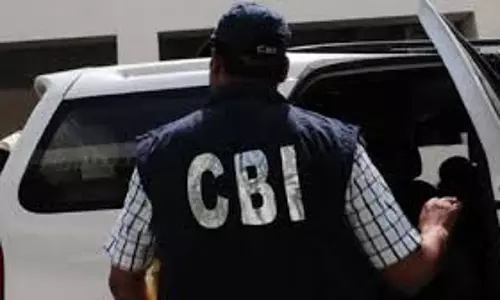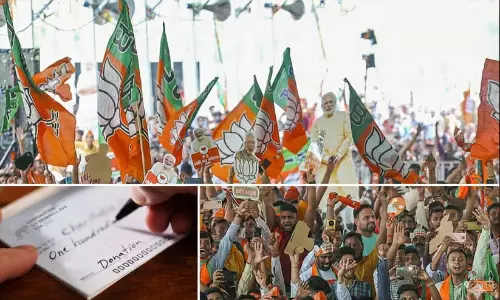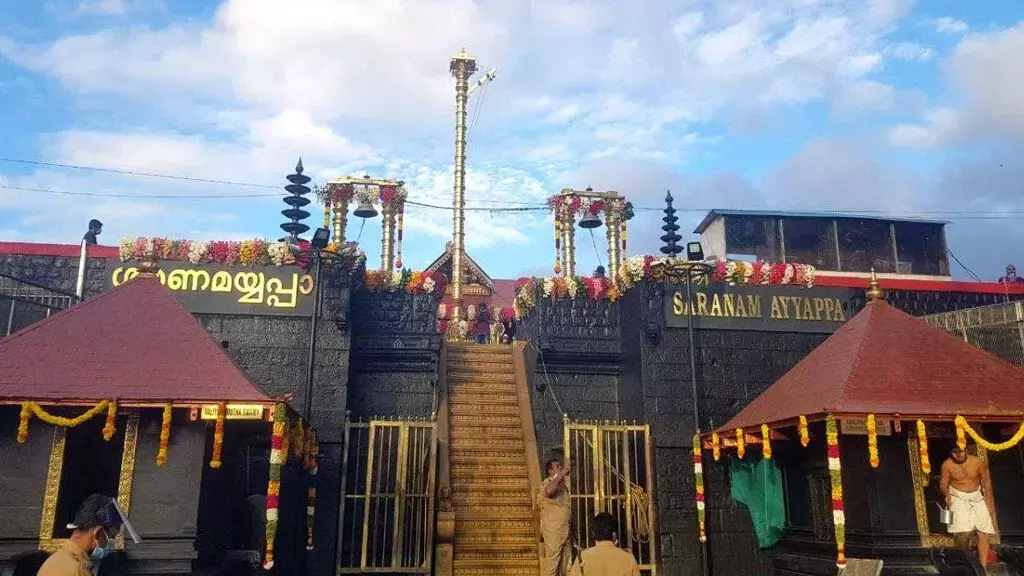
Is Kerala set for a tripolar fray given BJP's rise and LDF's vote dip?
text_fieldsOnce the bang of the Lok Sabha election had settled down, it furled two major developments in Kerala that deserve to be analyzed. One is the victory of the BJP, which the people had denounced for decades, and now conquered one constituency in the state, proving it is not an uphill task anymore. The second is the plunge of the Left Democratic Front, which proportionately contributed to expanding the vote share of its indirect rival, the BJP.
Being reduced to a solo seat was the biggest jolt that the ruling party received in the Lok Sabha election for the second time. The first one was in 2019 when the party lost 19 seats for backing the Supreme Court verdict allowing women to Sabarimala despite having a people-friendly policy and social welfare schemes. But unlike the previous debacle, this one came out as a strong resentment from the constituents that may also be reflected in the assembly election.
Since the formation of the state, the political equation of Kerala was between the Congress-led UDF and CPI(M)-led LDF. With these events in the election to the lower house, the political landscape of Kerala shifted from its bipolar nature to a triangular plank. The BJP gained a marginal shift in the vote share securing 16.68% of the total votes polled, an increase from 12.93% in 2019 and 10.5% in 2014. Meanwhile, the LDF and the UDF received 45.1% and 33.4% votes respectively, compared to 47.2% and 35.1% in 2019. Although the fluctuation in the vote portion for Congress and CPI(M) is small, the fruit BJP has reaped from this was huge.
Analyzing the median ENOP of the recent election gives an obscure picture of this shift. Effective Number of Parties (ENOP) is a metric used to measure party system fragmentation in a given state/constituency. Analytically, it is the reciprocal of the sum of the squares of the vote share of all candidates in a constituency. The higher the value of ENOP, the greater the political fragmentation in the elections. For example, if four candidates in a constituency secured 24%, 26%, 25%, and 25% of the votes, the ENOP value for the constituency would be 3.99. While the vote share percentage shows a huge difference from each other, it gives a lesser value. For instance, in the case of vote shares of 50%, 45%, 3%, and 2%, the value will be 2.2, which means decreased fragmentation.
In the election outlook of Kerala, the state hadn’t witnessed a median ENOP crossing 2.2 till the 1980 Lok Sabha election. Though it stepped up at a slow pace till 2004 to 2.5, it again reversed the growth to below 2.5 in 2009. But after 2014, it started showing a steep projection and reached an all-time high of 2.8 in 2024. This means the state’s battleground is heading toward a wider tripolar fray in the coming elections. The jump in the median vote share of the ruling NDA-led BJP from 9.2% in 2014 to 17.2% in 2024 is a clear indication of this emerging phenomenon.
But the point here is to be noted that along with the rising fragmentation and BJP’s boom across the state is the dimming glory of the Left Democratic Front in Kerala. Being the only state where the existence of the party has been sustained, the plunging vote share would fatigue the future of the party. The confidence that the LDF is bearing is from its landslide victory in the 2021 assembly election even after the setback in the 2019 Lok Sabha election by placing the right damage control measures and rising to the occasion during different crises, including the COVID-19 pandemic. But this time, the growing anti-left trend puts this optimism on the brink of uncertainty as the party could only garner 33.4% of the vote from the total, which is the lowest since the alliance was formed in 1984.
The party, which ensnared 40.1% of votes in 2014, fought in 2019 on the purview of supporting the Supreme Court ruling of allowing menstruating women to the Sabarimala shrine and had a significant backlash of losing about 5% of votes and 19 seats across the state. But a major drawback persisted with the front as the vote share it had lost in 2019 couldn't be retrieved in 2024 but instead fell into a further plunge.
With this dip in votes for LDF, the BJP had a strong foothold in several constituencies. In northern Kerala, five constituencies – Kasaragod, Kannur, Wayanad, Vadakara, and Kozhikode – the NDA has entailed a 2 to 6% increase in the vote share. In Alappuzha, the NDA had the biggest gain, bagging an 11% surge, in Thrissur 9%, and in Alathur, where they got 10% more votes.
This rise in the stake was attributed to the erosion of votes from the Ezhava community in constituencies like Thrissur, Attingal, and Alappuzha. Ezhava is the largest Hindu fold encompassing around 23% of the state's population that had kept a powerful allegiance with CPI(M) for years, presenting some tall leaders to the party. Another factor contributing to the anti-left sentiment was the growing anger towards Chief Minister Pinarayi Vijayan’s arrogant attitude towards the public, the corruption allegations involving his daughter, and numerous governance failures, including delays in distributing welfare pensions.
The track record of LDF’s performance in Lok Sabha has never been impressive except in 2004 when it could win a large chunk of seats ahead of UDF, and nationally the party became an outside support of the ruling coalition too. Staging a come-back by the LDF is still possible by correcting its mistakes, but the leadership should take the lead in it. This effort to polish and bring back the stronghold of the party will also help to diminish the growing ground support towards BJP. LDF has a proven record of resurgence in the assembly election in 2021 when its vote share was a massive 10.8% more than in the 2019 Lok Sabha polls.
Even though the BJP and Congress are direct rivals at the Centre, in Kerala, CPI(M)’s vulnerability fuels the growth of the BJP. This shift positions the state for a tripolar election scenario where all three parties have a significant voice. Ideally, increased fragmentation and a triangular contest would foster robust policy discussion and development. However, the rise of the BJP tends to promote polarization, a detrimental outcome that must be prevented at any cost.























